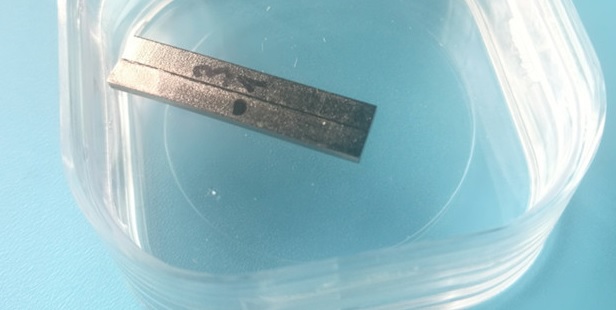The Magnetic Shape Memory Effect in magnetron shape memory alloys was discovered by Dr. Kari Ullakko and his collaborators in 1996. The first-generation magnetron shape memory alloy can reach a strain of 0.2%. Since then, people have made great progress in the production process, post-production treatment and training of magnetron shape memory alloys.
Magnetic Shape Memory Alloy (MSMA) is a new type of functional material. It only undergoes thermally induced martensitic transformation under the action of temperature field, and under the action of applied stress field and magnetic field, it can also produce stress induction and magnetic field induction Martensitic transformation. The main component of the magnetron shape memory alloy currently used is Ni-Mn-Ga, and its linear deformation rate can reach 10% at room temperature.
MSMA not only has the characteristics of large strain and high driving force of ordinary shape memory alloys, but also has the advantages of fast response speed and high efficiency, and is expected to become the preferred driving material in smart material systems.

Characteristics of commercial magnetron shape memory alloys:
Strain up to 6%
Stress up to 3.5 MPa
The magnetic field required for maximum strain is 500kA/m
Maximum strain load up to 2MPa
Output per unit volume is about 150kJ/m
Energy efficiency up to 90%
The response time is about 1 ms (in a magnetron shape memory actuator)
Hysteresis between stress or magnetic field and strain (material damping)
Internal friction
Both magnetic trigger or thermal trigger
Working temperature: -40 °C to 60 °C
Permeability and resistivity will change during deformation
Electrical Properties
Electricalresistivity (Ohm/cm) 70
Temperature coefficient (K-1) 0.003
Magnetic Properties
Coercivity (Hc) (A m-1) 4000
Curietemperature (C) 95 – 105
Initialpermeability Initial permeability 2
Maximumpermeability Maximum permeability 90
Remanence from saturation (Brem) (T) 0.02
Saturationflux density (T) 0.6
Mechanical Properties
Hardness-Vickers (kgf mm-2) 130
Modulus of elasticity (GPa) 8-20
PhysicalProperties
Density (g cm-3) 8
Melting point (C) 1130
Thermal Properties
Crystallization temperature (C) 1090
Maximum usetemperature in air (C) 45
Temperature -Austenitic (C) 50
Temperature -Martensitic (C) 45
MSMA has excellent performance, and its main performance indicators are 1 to 2 orders of magnitude higher than the performance of existing materials. The strain of this material is more than 10 times higher than that of the large magnetostrictive material (Terfenol-D) currently researched and developed, and more than 100 times higher than that of piezoelectric ceramics. In addition, MSMA has a high response frequency and a two-way strain effect. The above performance makes MSMA very suitable for the development of new brakes. It is also expected to be used in sensors, surface intelligent structures, aircraft wing control systems and ultra-high-power ultrasonic transducer technologies. etc.
These characteristics of Magnetic Shape Memory Alloy make it have a wide range of potential applications. In recent years, it has received widespread attention from relevant researchers, and has gradually become a hot research topic in the fields of materials science and medicine.

